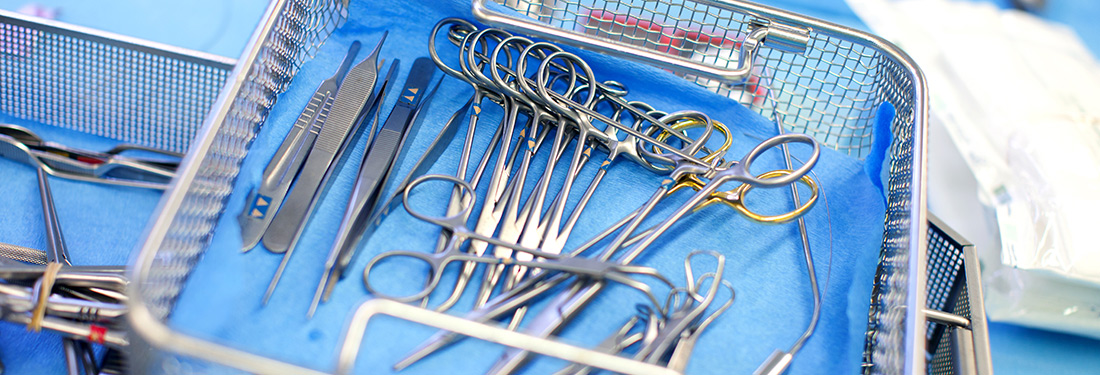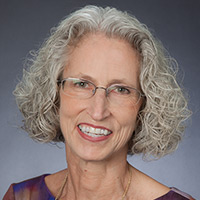Eliminating Waste to Improve Decontamination and CAUTI Rates
An interview with Celeste Derheimer, Senior Partner at Virginia Mason Institute
Why is recognizing waste so important to health care?
CD: Health care staff often begin their careers in systems that don’t help them provide their best work — systems full of waste. They learn to work with patients and each other despite all the waste, often going above and beyond, but they aren’t able to see the waste that is hurting patients and preventing them from doing their best work. Once they learn to see the waste around them, they can get rid of it and improve the quality of their work. They can also improve the time it takes to do their work. When the front line understands the Seven Wastes, they can see and quantify the waste they deal with every day – and work to eliminate it.
Have you worked with a team that had a major breakthrough after eliminating waste?
CD: I’ve worked with dozens of teams that have shown remarkable outcomes after they realized how bogged down they were with their wasteful processes. One team that had an amazing before and after was in a hospital decontamination department. During their improvement event, they wanted to improve the quality and turnaround time for sterilization of their instruments. There was a huge bottleneck in the decontamination unit, and the instruments were coming back to the surgery teams with defects — they weren’t sterilized, and they were late in coming. The surgery teams didn’t trust the instruments, the process to clean them or the people who worked in the decontamination unit. Both the surgery and decontamination teams did a lot of finger-pointing. Their working relationship was terrible.
During their RPIW [rapid process improvement workshop], they created a value stream map to understand what was happening from the time an instrument was used, to the time it was cleaned, to the time it came back to the surgery suite for its next use. Then a surgical nurse observed how the surgery workers tossed the used surgical instruments onto the cart and then sent that cart, often without warning, down to the decontamination area. When she saw what the decontamination workers had to go through just to get the instruments ready for sterilization — they were receiving large piles of dirty, untreated instruments, scattered helter-skelter all over the cart — she understood why they said they actually felt punished. They were forced to pick apart the instruments to begin the cleaning process, and they felt rushed. The situation was bad ergonomically, too, and the instruments were covered with dried fluids, making them impossible to clean well in a short period of time. The nurse said, “No wonder the instruments aren’t getting clean!”
So it really took just one nurse to see the process from beginning to end to see the waste?
CD: That’s how it started. She had to walk in their shoes to see what the two teams were dealing with so that they could improve it. Then the teams worked together to make the process better for everyone. By the end of the event, the surgical team developed a process that made it easy for them to pretreat the dirty instruments, arrange them in an organized way, and give the receiving team warning that a cart was coming. One of the decontamination team members couldn’t believe the difference. She said, “I don’t know what to say. You have no idea what this means to us.” It was emotional. Before the event, the waste was everywhere — the wastes of defects, time, processing, motion and transportation — but the teams couldn’t improve their situation because they couldn’t see the waste.
“They made the processes safer for their patients, which is what is most important to the staff, and didn’t increase the work for themselves — it was actually more efficient. Everyone has been really proud of their work.”
– Celeste Derheimer
Is this process of waste elimination most suitable for problems with processes that have a visible component, like dirty instruments or a disorganized storage closet?
CD: It’s useful for all kinds of processes. With one team that I coached, the focus was on the elimination of CAUTIs [catheter-associated urinary tract infections]. One of the best ways is to avoid placement of the catheter in the first place. They organized an improvement event that focused on the ED since this was one of the main entry points to the hospital. During the data collection leading up to the event, they discovered that their organization had the most up-to-date criteria for placement of a Foley catheter in their documentation but that the staff a) didn’t know what the criteria was, b) weren’t following the recommendations, or c) couldn’t find the documentation. The team worked hard to make the documentation clear in the text and the visuals, and they tested it and trained employees. They also put the documentation at the point of use, and they developed standards so that all staff members kept the documentation in its agreed-upon place.
Did results improve?
CD: The results were pretty amazing. After the event all the providers knew where to find the criteria — which the team simplified so it was easy to follow — and they adeptly used the improved documentation process, which meant that all team members had access to the same information. Their rate for Foley catheter placement went down significantly, and the UTIs attributed to the ED went down to zero. Every month when I visited, one of the nurses from the team would show me their graph. “Still zero,” the nurse would tell me. They went from an unacceptably high rate of CAUTI incidents in their ED to zero — and they kept it there.
Did this have a noticeable effect on the team?
CD: They were overjoyed. The physicians, nurses and unit secretaries worked together to solve this problem. They saw the wastes in their processes, and they realized they didn’t have to work that way. They learned that they didn’t have to accept that CAUTI was going to happen to their patients. They made the processes safer for their patients, which is what is most important to the staff, and didn’t increase the work for themselves — it was actually more efficient. Everyone has been really proud of their work.






